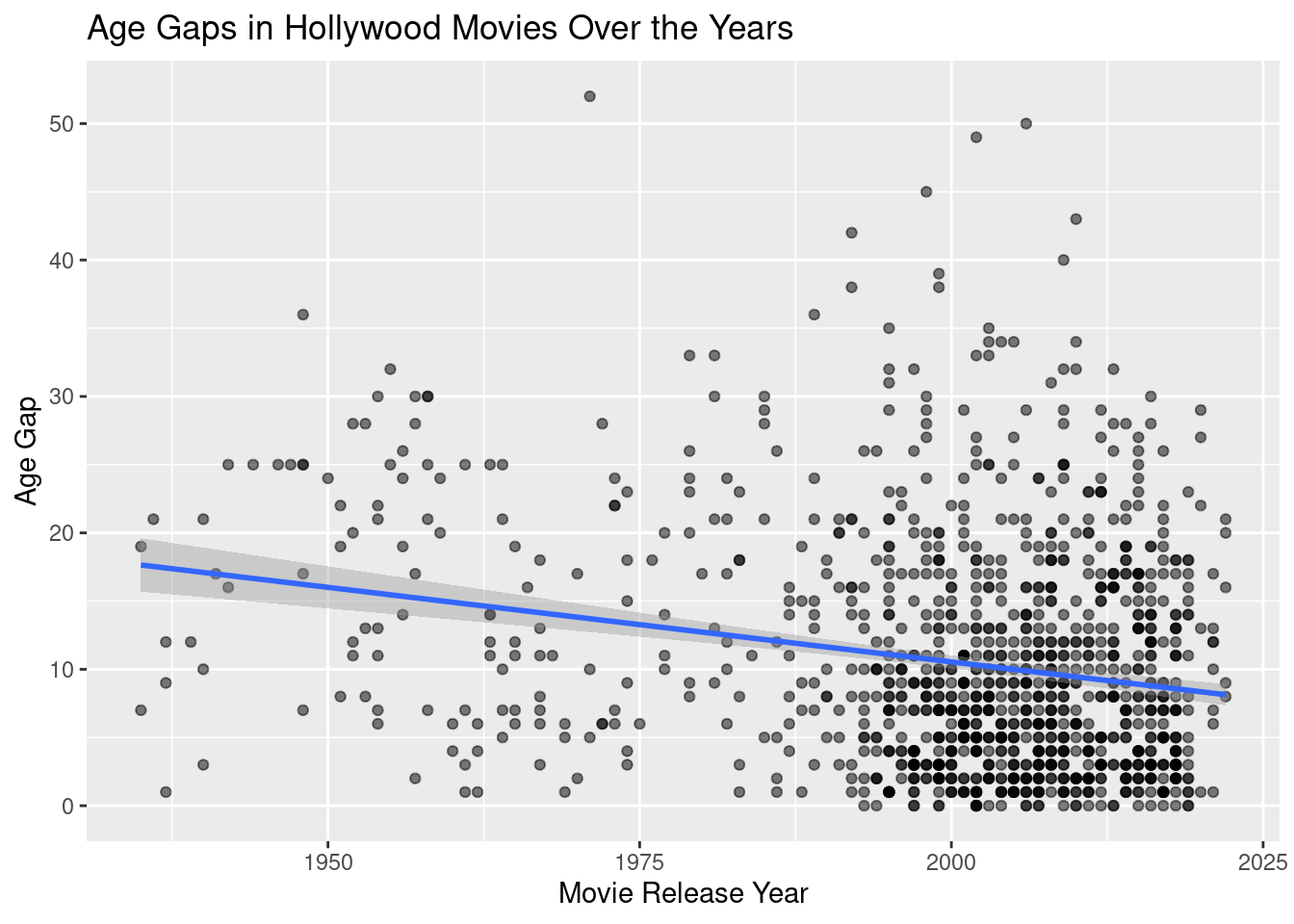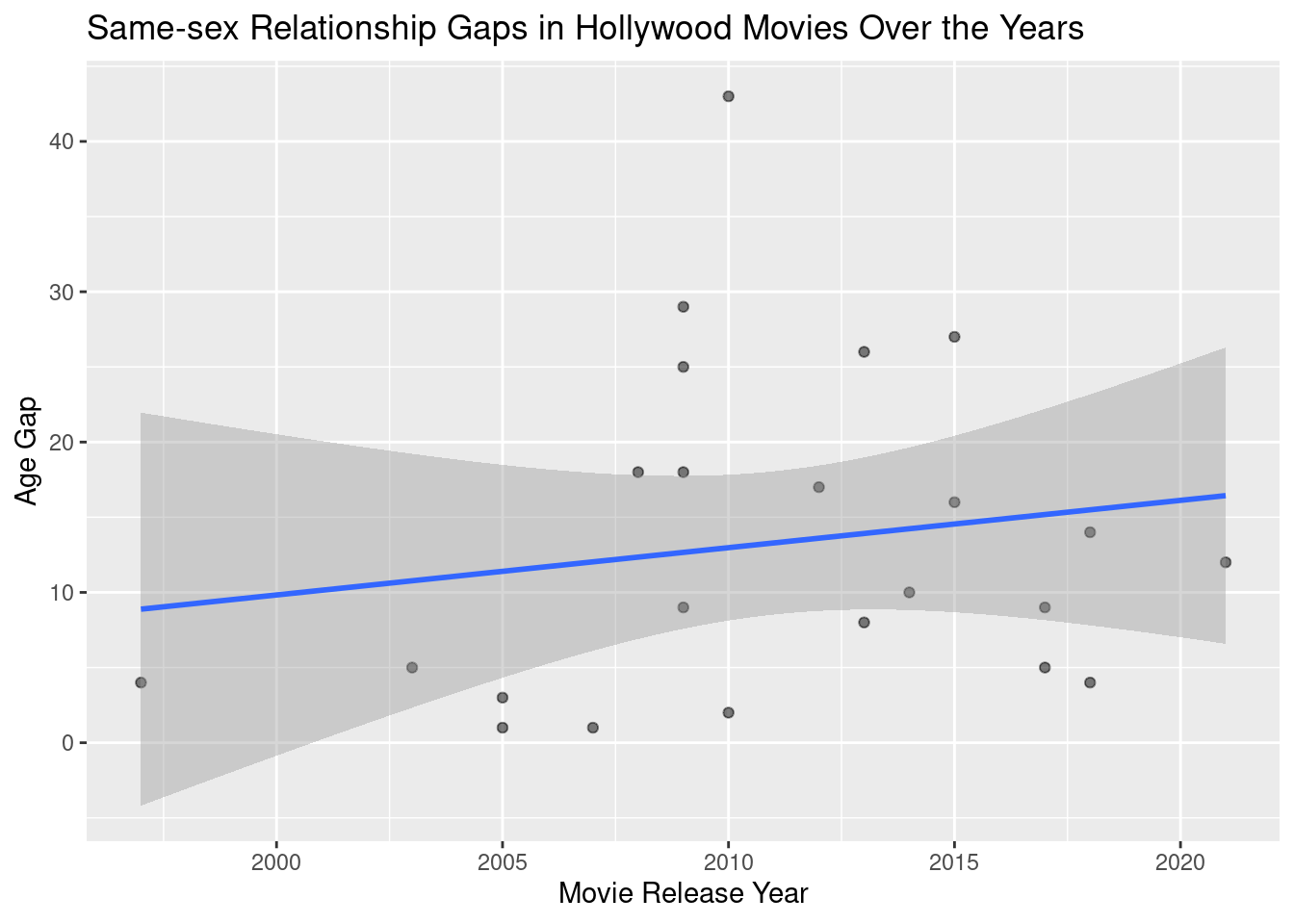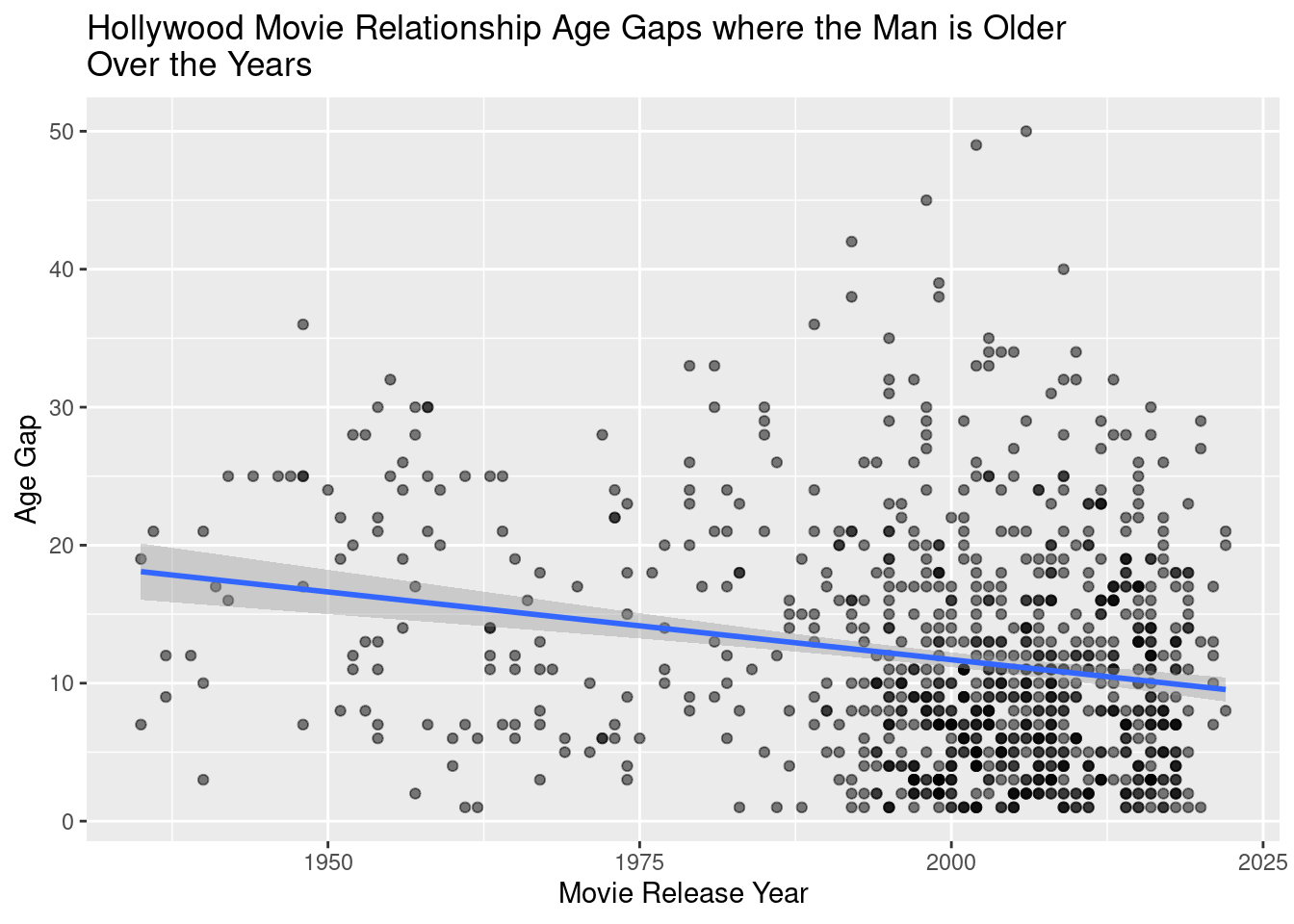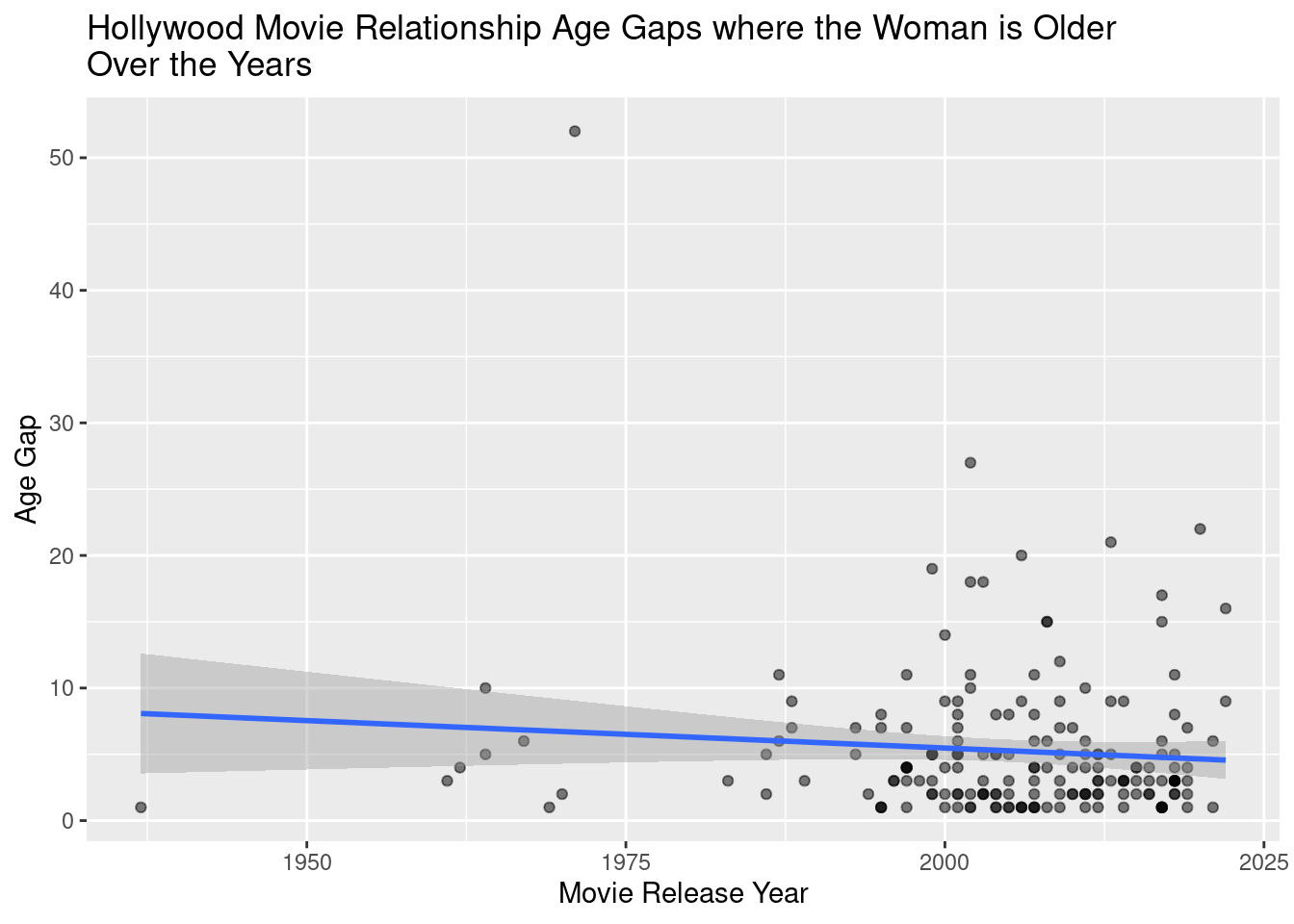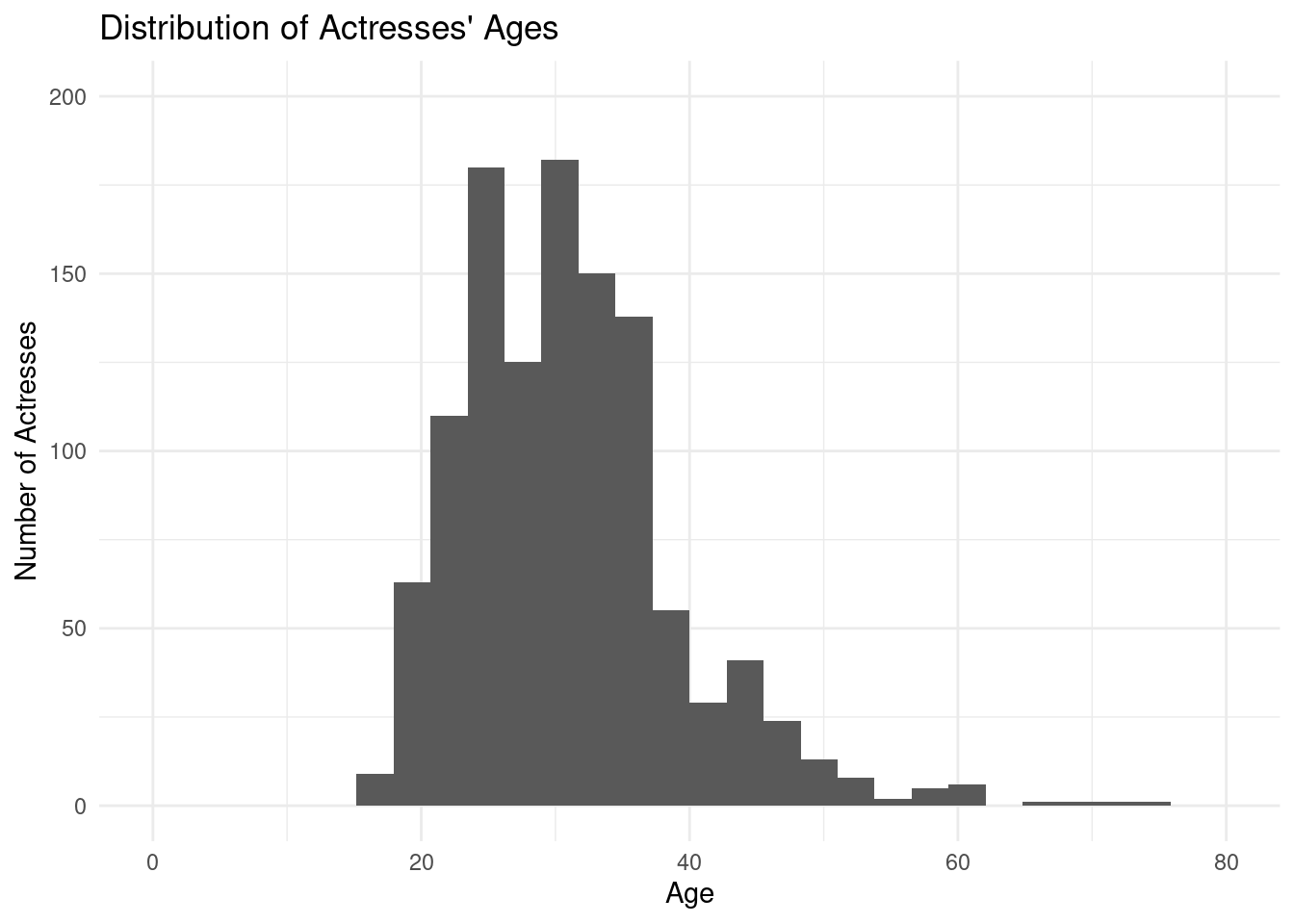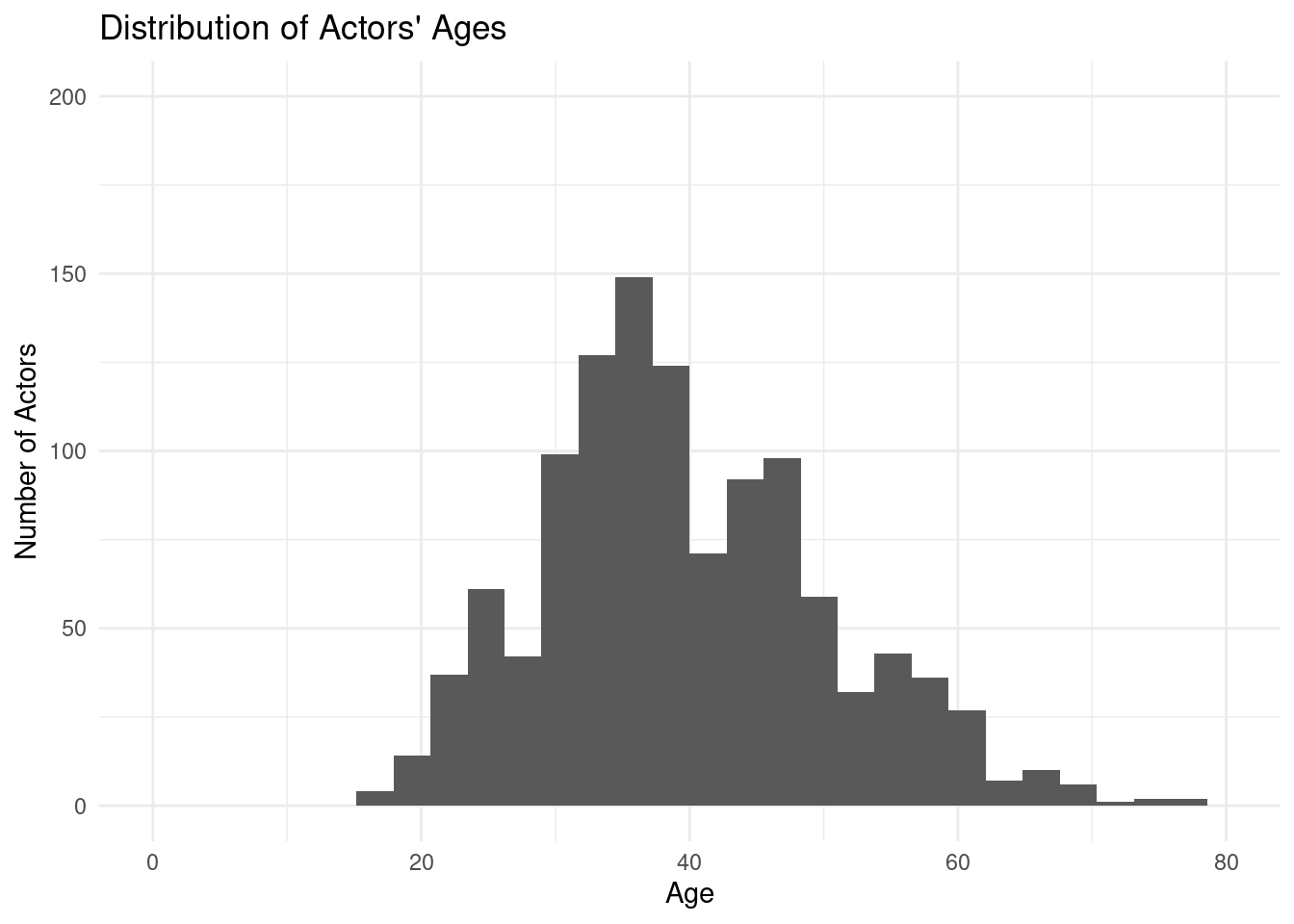Rows: 1,161
Columns: 12
$ Movie.Name <chr> "Harold and Maude", "Venus", "The Quiet American", "…
$ Release.Year <int> 1971, 2006, 2002, 1998, 2010, 1992, 2009, 1999, 1992…
$ Director <chr> "Hal Ashby", "Roger Michell", "Phillip Noyce", "Joel…
$ Age.Difference <int> 52, 50, 49, 45, 43, 42, 40, 39, 38, 38, 36, 36, 35, …
$ Actor.1.Name <chr> "Bud Cort", "Peter O'Toole", "Michael Caine", "David…
$ Actor.1.Gender <chr> "man", "man", "man", "man", "man", "man", "man", "ma…
$ Actor.1.Birthdate <chr> "1948-03-29", "1932-08-02", "1933-03-14", "1930-09-1…
$ Actor.1.Age <int> 23, 74, 69, 68, 81, 59, 62, 69, 57, 77, 59, 56, 65, …
$ Actor.2.Name <chr> "Ruth Gordon", "Jodie Whittaker", "Do Thi Hai Yen", …
$ Actor.2.Gender <chr> "woman", "woman", "woman", "woman", "man", "woman", …
$ Actor.2.Birthdate <chr> "1896-10-30", "1982-06-03", "1982-10-01", "1975-11-0…
$ Actor.2.Age <int> 75, 24, 20, 23, 38, 17, 22, 30, 19, 39, 23, 20, 30, …
